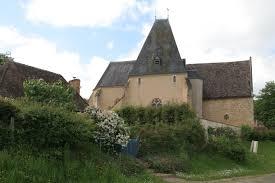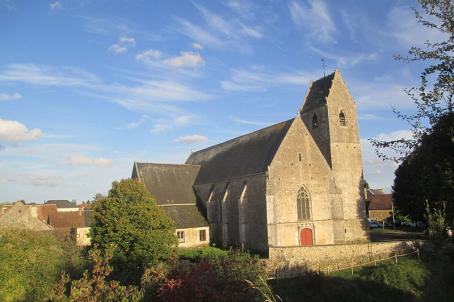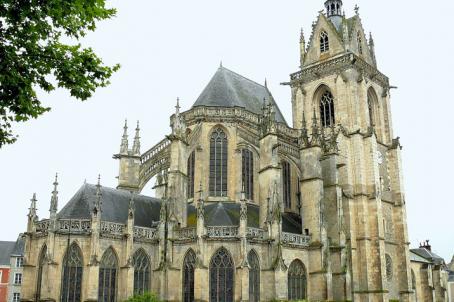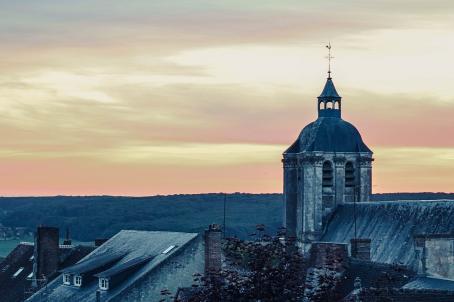Church of Saint-Brice
The church of St Brice de Courcival was built in the eleventh century. The only remains of the original building are the north wall of the nave and two Romanesque bays. The church was enlarged in the fifteenth and sixteenth centuries by the addition of chapels and a bell tower. It was restored in the nineteenth century, and now the church has a single nave with a chancel and two chapels, forming the transept. Inside the building, you can admire a seventeenth century terracotta statue of the Madonna and Child.
About this building
Dominating the valley of Tripoulain, in the country of the Loire, the Church of St Brice de Courcival shared its promontory with the now destroyed castle of the Lords of Courcival. One can imagine that the original Church, built in the eleventh century on the old pilgrimage way of ST Mamert, was highly impressive.
From this time there remains only the north wall of the nave and two Romanesque bays. The church was enlarged in the 15th-16th centuries by the addition of chapels and a bell tower which could be used for its defense during the wars of religion. Note the pillar (16th century) that supports the vault of the northern chapel and its decor consisting of two angel heads at the top and a skull with bones at the base. These sculptures symbolize paradise opposing hell (or good to evil).
The Church was restored in 1872-1873 and reconstructed with a single nave with a chanted choir and two chapels, forming the transept. A sacristy was attached to the choir. There is also a crypt. The north chapel is vaulted with ogives while the other vaults are paneled.
Inside the building, there is a 17th century terracotta statue of the Madonna and Child. This virgin, whose sculpting is characteristic of the seventeenth century, wears a garment whose ample drape gives the impression of movement. The facial features of Christ evoke those of an adult. This statue probably lost its polychrome in the late nineteenth century. Also notable is the the funerary monument of Pierre de Baigneux, lord of Courcival and his wife and the stained glass dating from 1874.






